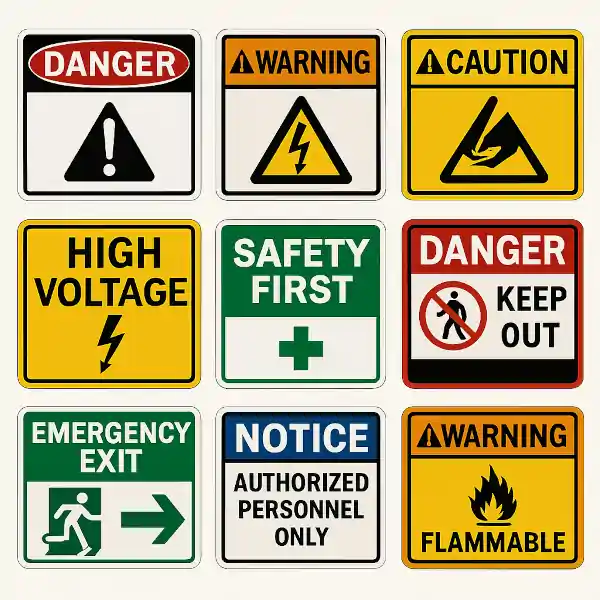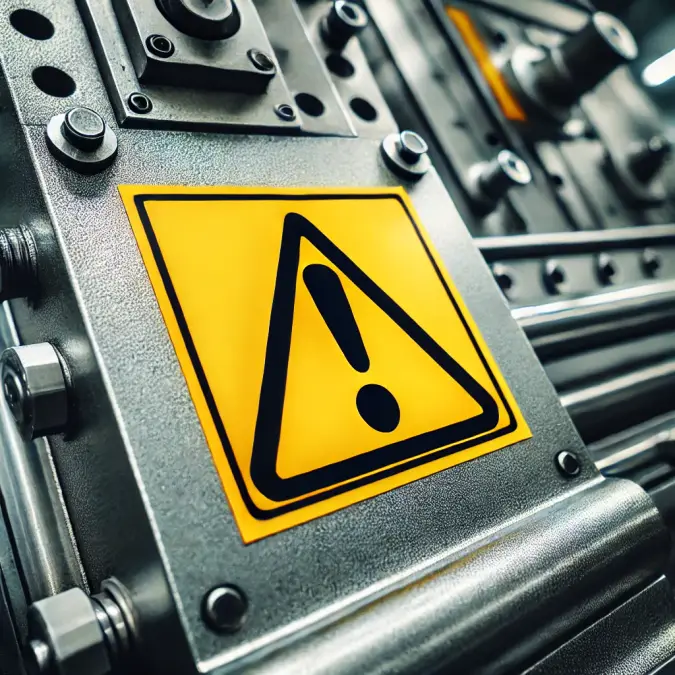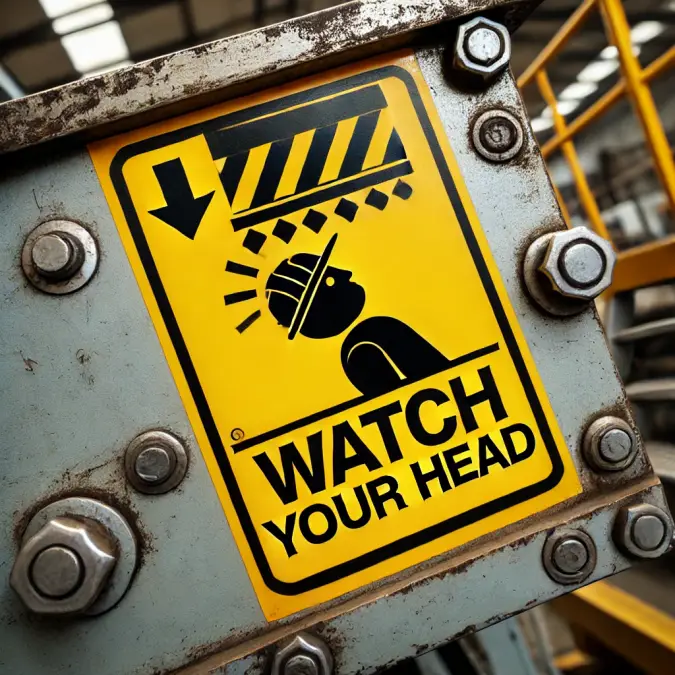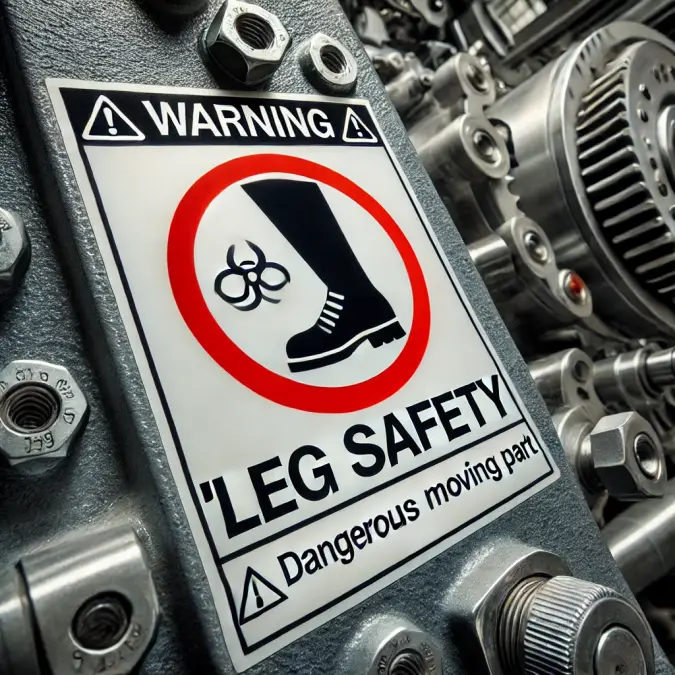






Safety Labels manufacturer
Every workplace, factory, hospital, and school has one common need—safety. Safety is not just about having the right equipment; it’s also about giving people clear warnings and reminders at the right time. This is where safety labels and safety stickers come into play. They are small in size but hold great power in protecting lives, preventing accidents, and ensuring smooth operations.
In this detailed guide, we’ll explore what labels are, the perks of using them, where they can be implemented, their history in the 20th century, the methods of attaching them, and why Anandha Print Solutions Pvt. Ltd., a safety stickers manufacturer in Chennai, India, is a trusted partner for businesses across industries.
What Are Safety Labels?
Safety labels are printed signs, stickers, or labels that warn people about potential risks or provide safety instructions. They use bright colors, clear fonts, and symbols to quickly grab attention and deliver important messages.
For example:
- A “Danger: High Voltage” label warns workers near electrical panels.
- A “Wear Safety Goggles” sticker reminds people to use protective gear.
- A “Hot Surface” label prevents accidental burns in factories.
These stickers are made from durable materials like polyester, vinyl, or polycarbonate so that they last even in tough environments like factories, construction sites, and chemical plants.
Perks of Safety Labels
The benefits of safety labels go far beyond just warning signs. They bring real value to workplaces:
- Accident Prevention
Clear warnings reduce workplace injuries. A simple “Slippery Floor” sticker can prevent falls and costly accidents.
- Legal Compliance
Industries must follow safety laws. Using proper labels helps companies meet government regulations and avoid penalties.
- Better Awareness
Bright and bold stickers keep safety top of mind for workers. They act as constant reminders.
- Saves Time and Money
Accidents can stop production and cost money. They are a small investment that prevents big losses.
- Builds Trust
When employees and customers see proper safety signs, they trust the company more. It shows care for people’s well-being.
Implementations of Safety Stickers
Safety stickers can be used in many places and industries.
In Factories
- Machine warnings like “Keep Hands Away”
- High temperature warnings on boilers
- Chemical hazard labels
In Hospitals
- Biohazard stickers on waste bins
- Oxygen cylinder labels
- Emergency exit signs
In Schools and Offices
- Fire exit signs
- Electrical shock warning labels
- First aid station stickers
In Construction Sites
- Hard hat zone labels
- Danger signs near excavation areas
- Safety harness reminders
In Vehicles
- Airbag warnings
- Fuel caution labels
- Speed limit reminders for company fleets
Everywhere people move, work, or interact with equipment, these labels play a life-saving role.
Purpose of Safety Labels During the 20th Century
The 20th century was an era of rapid industrial growth. Factories, automobiles, and new machines became common. But with progress came risk—more accidents, fires, and workplace hazards.
During this time, Critical Safety Labels manufacturer That Saves Life became essential. Clear warnings on machines, electrical panels, and vehicles helped reduce accidents. For example:
- The automobile industry started using warning stickers for airbags and seat belts.
- Chemical factories used hazard labels to prevent mishandling.
- Hospitals relied on biohazard stickers to control infections.
In short, the 20th century taught the world that stickers are not optional—they are necessary. They became a global standard for protecting lives and improving workplace safety.
Methods to Attach Safety Stickers
The effectiveness of a sticker depends on how well it is applied. Here are common methods used by safety labels manufacturers:
- Permanent Adhesives
Best for machines and equipment that need long-term warnings. Once applied, these stickers are very hard to remove.
- Removable Adhesives
Good for temporary safety messages like “Wet Paint” or “Temporary Hazard.” They can be peeled off without leaving marks.
- Heat-Resistant Adhesives
Used in industries like steel, welding, and manufacturing where equipment gets hot.
- Waterproof Adhesives
Made for outdoor or marine environments where rain or water is common.
- Magnetic Labels
Reusable and perfect for temporary warnings in changing work environments.
Each method depends on the industry, environment, and safety needs.
Why Anandha Print Solutions Pvt. Ltd. for Safety Stickers?
When it comes to choosing the right stickers manufacturer, businesses need a partner who understands quality, durability, and compliance. Anandha Print Solutions Pvt. Ltd., based in Chennai, India, is one such trusted name.
- High-Quality Materials
Their labels are made from polyester, polycarbonate, and vinyl that can withstand heat, chemicals, and outdoor weather.
- Custom Designs
From danger warnings to mandatory instructions, they offer fully customizable stickers with logos, colors, and industry-specific icons.
- Industry Experience
Years of serving factories, IT companies, schools, and hospitals make them experts in safety printing solutions.
- Compliance Ready
Labels are designed to meet safety standards and regulations, helping companies stay legally compliant.
- Cost-Effective Production
As a Chennai-based labels manufacturer, they provide competitive pricing for bulk orders while maintaining top quality.
Why Chennai, India?
Chennai is not just a hub for technology and industry—it is also home to some of India’s best safety sticker manufacturers.
- Skilled Workforce – Chennai has a strong printing and manufacturing workforce.
- Strategic Location – Easy access to ports and transport makes it efficient for nationwide and global supply.
- Industrial Growth – From automotive to healthcare, Chennai’s industries create high demand for labels.
- Trusted Reputation – Businesses in India and abroad rely on Chennai-based manufacturers for durability and quality.
For businesses that want reliable safety labels manufacturers, Chennai is one of the top choices.
FAQs: Everything You Need to Know
Q1: What are these labels made of?
They are usually made of polyester, vinyl, or polycarbonate to resist wear and tear.
Q2: Can I customize these stickers with my logo?
Yes, most stickers manufacturers offer customization with logos and colors.
Q3: Are these labels waterproof?
Yes, waterproof options are available for outdoor and marine industries.
Q4: How long do stickers last?
Depending on material, they can last from 3 to 10 years.
Q5: Can these be removed?
Yes, removable adhesive options exist for temporary warnings.
Conclusion
Safety labels may look small, but they are powerful guardians of human life and workplace safety. They prevent accidents, ensure compliance, save money, and build trust.
From factories and hospitals to schools and vehicles, they deliver warnings that protect people every single day. In the 20th century, they became a global necessity, and today, they are even more important as industries grow.
Choosing the right partner like Anandha Print Solutions Pvt. Ltd., a leading safety stickers manufacturer in Chennai, India, ensures your workplace has strong, durable, and compliant safety solutions.
When it comes to safety, compromise is not an option. These labels are not just stickers—they are life-saving tools.
Contact Details:
Address:
ANANDHA PRINT SOLUTIONS PVT LTD
32/2, First Floor,
Sathanipet 2nd Street,
Adj. Five Furlong Road,
Maduvinkarai, Guindy,
Chennai, Tamil Nadu,
India- 600 032.
Phone:
+91 98409 64267
Email:
info@aprints.in
sales@aprints.in
admin@aprints.in
accounts@aprints.in
design@aprints.in
Geo – Domestic State Supplies
Andhra Pradesh | Arunachal Pradesh | Assam | Bihar | Chhattisgarh | Goa | Gujarat | Haryana | Himachal Pradesh | Jharkhand | Karnataka | Kerala | Madhya Pradesh | Maharashtra | Manipur | Meghalaya | Mizoram | Nagaland | Odisha | Punjab | Rajasthan | Sikkim | Tamil Nadu | Telangana | Tripura | Uttarakhand | Uttar Pradesh | West Bengal
Geo – Domestic City Supplies
Chennai | Mumbai | Kolkatta | Delhi | Bengaluru | Hyderabad | Coimbatore | Thirchy | Madurai| Salem | Erode | Kanyakumari | Thanjavur | Tirunelveli | Vellore | Tiruppur | Kochi | Thiruvananthapuram | Kozhikode | Thrissur | Kollam | Tumkur | Mangalore | Mysore | Udupi | | Davangere | Dharwad | Hubli | Belgaum | Chitradurga | Karwar | Batkal | Visakhapatnam | Vijayawada | Nellore | Sri City (Tada) | Rajahmundry | Ongole | Tirupathi | Kakinada | Amaravathi | Guntur | Anantapur | Kadappa | Ahmedabad | Surat | Vadodra | Rajkot | Bhavnagar | Jamnagar | Jaipur | Jodhpur | Udaipur | Ajmer
International Supplies
Asia- Malaysia | Singapore | Japan | Korea | Thailand | Myanmar | Indonesia | Vietnam | Cambodia | SAARC- Srilanka | Bangladesh | Nepal | Bhutan | Afghanistan | Africa- Algeria | Ethiopia | Ghana | Nigeria | Uganda | Kenya | Tanzania | Uganda | Zambia | Zimbabwe | Egypt | Middle East- UAE | Kuwait | Qatar | Oman | Kingdom of Saudi Arabia | Bahrain | Jordan | Europe- United Kingdom | Germany | France | Switzerland | Italy | Spain | Portugal | Norway | America– United States Of – America | Canada | Mexico | Brazil | Argentina | Greenland | Other Countries – Russia | Australia






